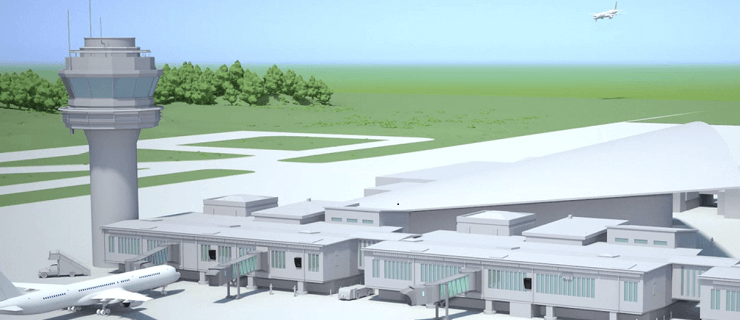
The Pilot Common Project (PCP), defined by SESAR in order to allow large airports in Europe to handle increasing air traffic, will require certain functionalities of traditional Air Traffic Management systems. Several of the new functionalities are a result of integration and how this should be fulfilled can be interpreted differently. Choosing an Advanced Visual Docking Guidance System (A-VDGS) to support the requirement for future operational needs is an imperative. In this article we highlight some of the important functionalities.
New sub-systems are needed at airports in order to achieve a higher level of requirements within PCP, for example pre-departure management (Pre-DMAN), A-CDM compliance and Routing and Guidance. Some of these important functionalities are highlighted below with a high level description.
Routing and Guidance
Validations of Follow the Greens method show that viewing the Airfield Ground Lighting (AGL) as a direct guidance tool on the airfield improves performance as compared to how most airports operate today. With aspects such as ATC workload, situation awareness, aircraft separation and aircraft guidance, Follow the Greens can increase safety and efficiency and reduce the cost of airport and airline operations.
Taking into consideration the entire route, from touchdown to the point where the aircraft is finally parked, the guidance system transitions into apron lead-in lights all the way to the gate. A logical and necessary step is to provide a seamless guidance for flight crew from airfield lighting to total guidance and awareness in the gate area so that the chain of guidance is not broken until the route is finalized. A-VDGS is the extension of the flight crew guidance in the gate area and also the sensor which provides necessary awareness for ATC, apron control and ground personnel.
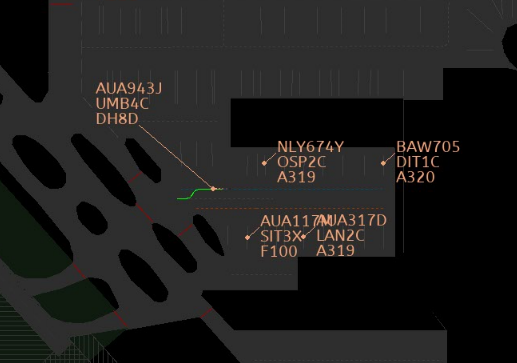
Gap filler – Integrated Docking & Surveillance Systems
With integration of the A-VDGS laser positioning system, positional data around the gate area is automatically provided to connected surveillance systems. In these applications the integrated systems not only have real-time data of the aircraft inbound/outbound process at the gate/apron area, but can also provide alerts if the aircraft tail is inside the safe area of the gate and not obstructing the taxiway.
The safety advantage of knowing that an aircraft is not obstructing the taxiway – reducing the possibility of collision with another aircraft on the taxiway behind the parked aircraft – is obvious.

Gate Integration & Turn Process
As soon as the aircraft reaches its final stop position, the ground handling activities may start and the turnaround process is initiated. The progress of these processes is often hidden from many stakeholders such as apron control, DMAN system and air traffic controllers, who may be affected by the outcome of this process. By integrating the gate equipment and extracting data which can be translated into operational information, the stakeholders can improve predictability of the departure sequencing and be more pro-active towards the operational flow. The A-VDGS and Apron Management system is well positioned and already contains a lot of information to aggregate a complete picture which stakeholders can use to improve performance.
A-CDM Communication
A-VDGS display used as a Ramp Information Display System (RIDS) provides a more efficient gate operation process. The A-VDGS includes a large display to provide docking guidance information to pilots when they are more than 100 meters from the gate. When the A-VDGS displays are not actively docking aircraft, they are also well suited for providing alphanumeric data to operational personnel. The strategic position of the A-VDGS display makes it clearly visible from the entire gate area.
In an integrated CDM setup, the docking guidance display is used as a RIDS. The RIDS provides ramp personnel with real-time data of the target off block times or countdown timers for specific actions, which they need to meet, or other free text information that is vital to operational personnel around the gate or apron. These countdown timers synchronize personnel to a specific target time and it is proven to provide a much more efficient gate operation.
The docking guidance system – originally designed to increase safety by automating the docking of aircraft – has now become the core of CDM. When integrated with adjacent airport systems and gate equipment, the A-VDGS provides support for more predictable aircraft turnaround times, thereby increasing efficiency and profitability for the airport.
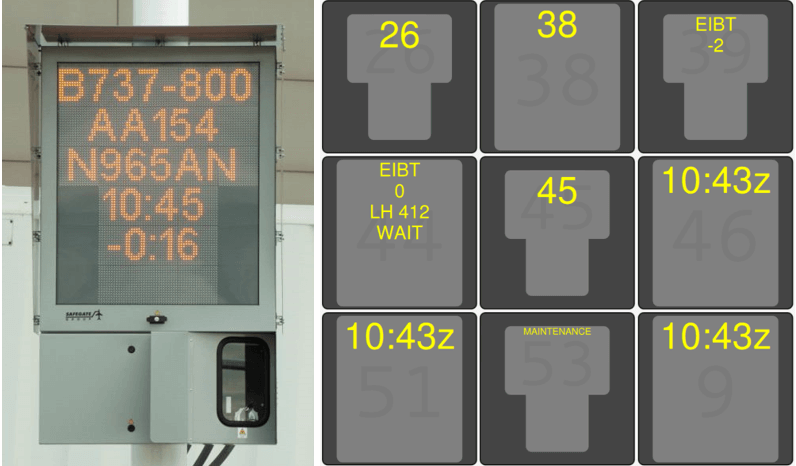

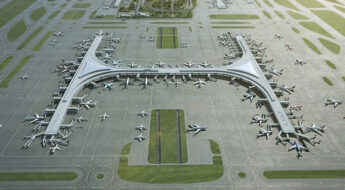









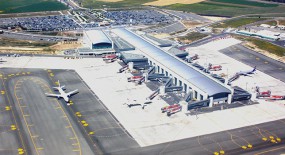



COOL EXPLAINATION.